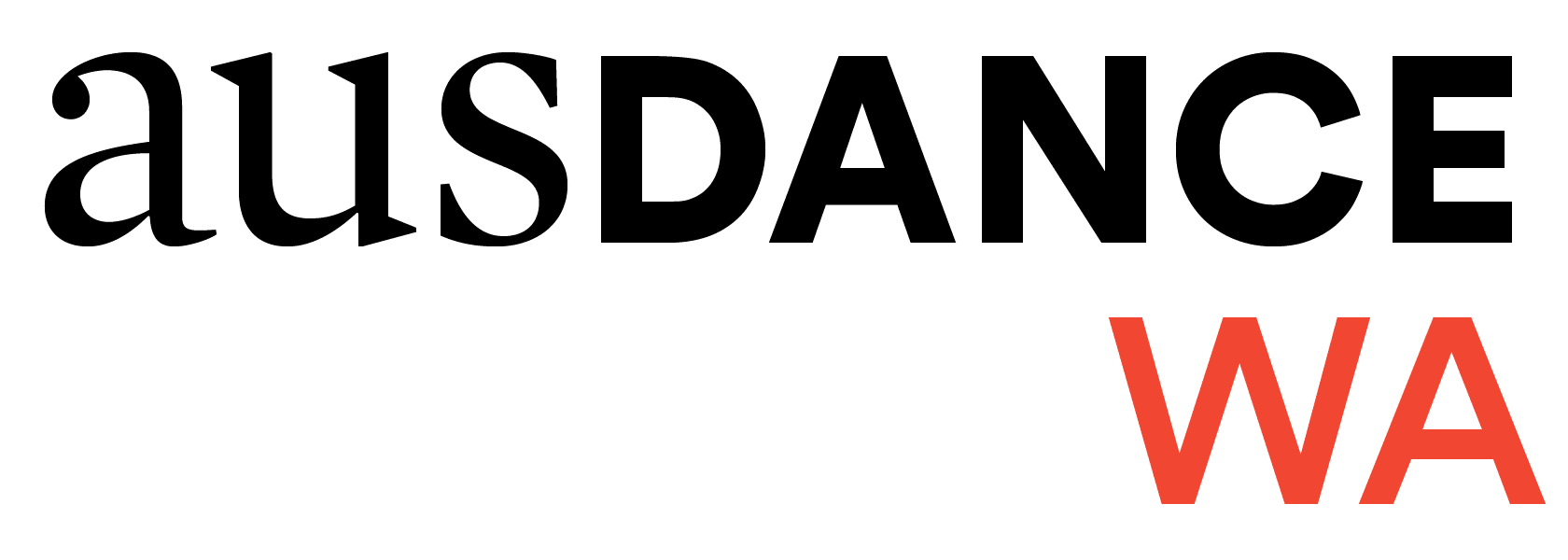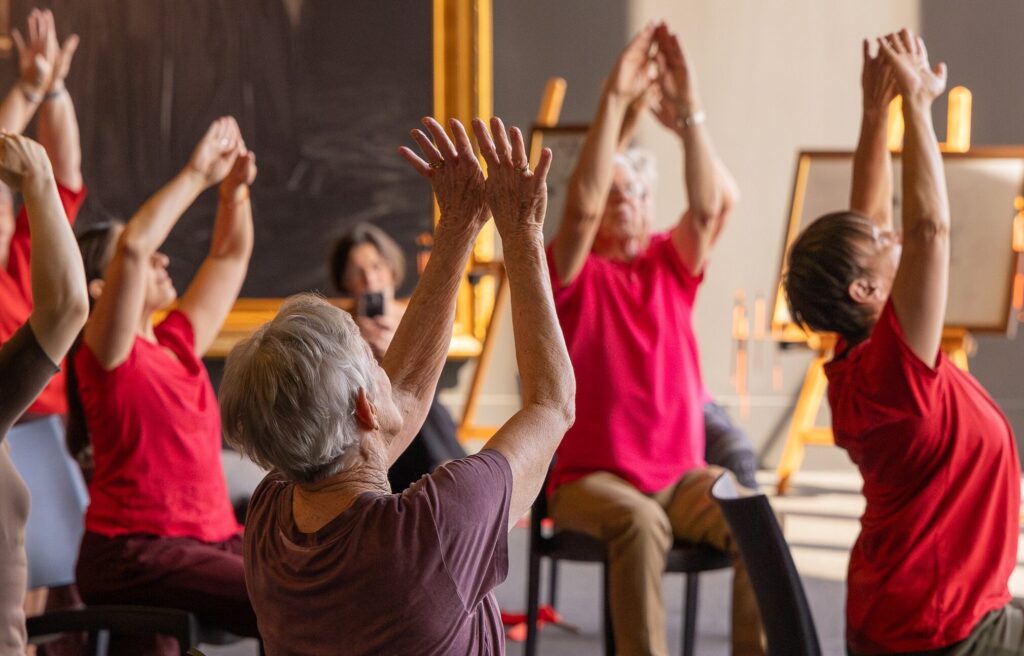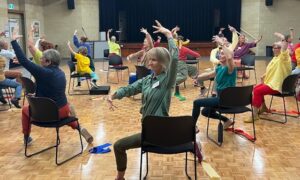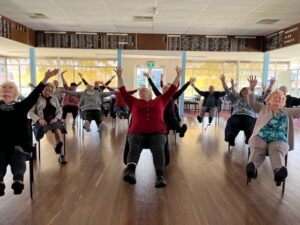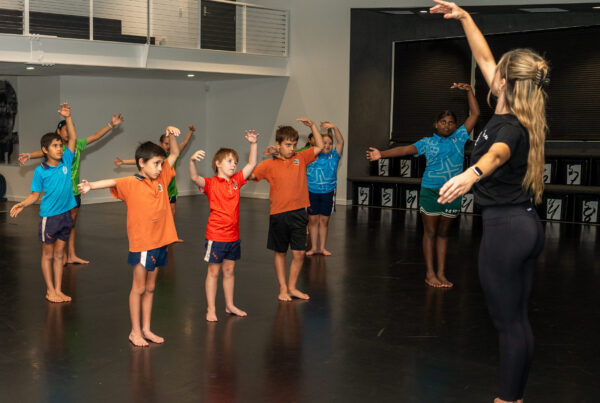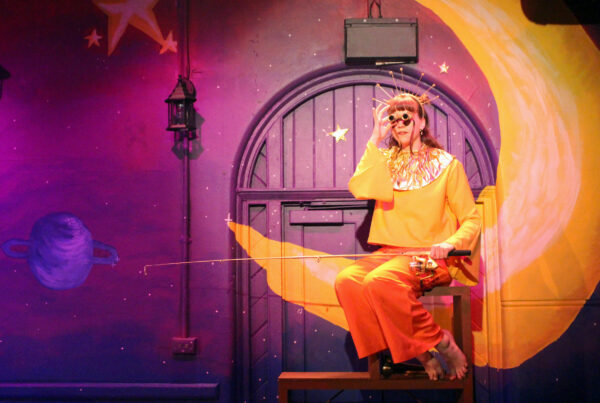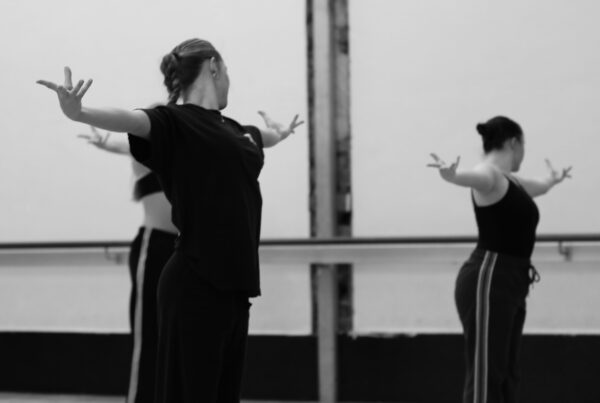It’s been a decade since Dance for Parkinson’s classes arrived in WA. But the best is yet to come, Lifespan Dance’s Paige Gordon tells Nina Levy.
In a sunny corner of the Vincent Community Centre in Leederville, a little movement magic is happening.
I’m one of a dozen or so people, sitting on chairs arranged in a circle. We’re all watching dance artist Paige Gordon and her assistant Christine Consani as they lead us through a dance class.
The structure is familiar to me as a tertiary-trained dancer – exercises that play with articulation and mobility, rhythm and coordination – but this is the first time I’ve taken a dance class that starts seated on a chair. And it’s the first time I’ve done a class where most of my classmates are seniors, some of whom use mobility aids such as wheelchairs, walkers or sticks.
Gordon was occasionally a guest teacher when I was a student at the Western Australian Academy of Performing Arts (WAAPA). Although it’s been over 25 years since I’ve taken her classes I quickly recognise her distinctive style, which injects a sense of narrative and whimsy as we unfurl our spines, spiral our torsos, carve space with our arms, flick our feet. This class is designed to accommodate all abilities, so some dancers complete the entire class seated, whilst others come to standing.
But there’s another layer here – Gordon has carefully choreographed the exercises to include playful interaction with one another, encouraging a sense of connection. As a visitor to the class I feel like I’ve immediately made friends.
What’s more, this opportunity to scan the room reveals a circle of faces and bodies lit up with joy.
That’s just one of the many benefits of this dance class, which is run by Lifespan Dance, an organisation founded and directed by Gordon, that facilitates positive creative ageing by offering seated dance classes, workshops and performances throughout Perth and regional Western Australia.
The seated dance class is based on a method known as Dance for Parkinson’s (DfP). As the name suggests, DfP was developed specifically for people with Parkinson’s Disease but is also used to provide accessible dance classes for the senior community more broadly.
“There’s been a lot of research on Dance for Parkinson’s, particularly on the physical benefits on gait and balance, and also cognitive effects,” says Gordon. “There has also been research into the firing of the brain… and how dance can help with that because of its sequencing, its rhythm, the way it accents movement to music, but also direction and spatial understanding.”
Testimonials from specialists refer to the ways in which dance helps Parkinson’s patients to overcome the “freezing” that characterises the disease, improves mobility, and reduces pain and stiffness, balance, movement fluidity.
In keeping with my own observations, the specialists say that the class brings intangible benefits to participants too, speaking of increased social connection and interaction, and improvements in self-esteem and sense of purpose.
Chatting to some of the participants after class, their feedback echoes that of the specialists. When I tell participant Frank how much I enjoyed the class, he replies, “That’s representative of the total feel you get from this class. It’s before, during and after. There’s a sense of fellowship.”
Frank and his wife Penny have been attending Lifespan dance classes for over two years, and although it was Penny’s medical conditions that prompted them to join, they are equally enthusiastic about the benefits.
“I feel great at the end of class because it is helping with my balance and coordination. You get to a certain age, the first thing that happens is you fall over,” continues Frank. “This provides a good back up. It’s connecting the music with the body. It’s a two-way conversation and I just love it.”
“It’s connecting the music with the body. It’s a two-way conversation and I just love it.”
A decade of Dance for Parkinson’s in WA
Originally developed in New York at the Mark Morris Dance Centre in 2001, DfP first arrived in Western Australia in 2015, when the Mark Morris Dance Group (MMDG) performed at Perth Festival. To coincide with the visit, a two-day intensive training program, which included a DfP class led by MMDG members, was held in Perth.
The timing was perfect for Gordon. After a career trajectory that included dancing with the Meryl Tankard Company in Canberra, founding and directing her own company in Canberra, and directing Perth’s Buzz Dance Theatre, in 2015 she was working in Perth with DADAA’s Tracksuit, a dance company for adults with disability that she had co-founded in 2010 with James Berlyn.
Gordon loved the DfP training program and quickly teamed up with two other attendees, Katy Geertsen, a recent WAAPA graduate, and physiotherapist and former dancer Kim Hughes.
Supported by Ausdance WA, the trio ran DfP classes that began as a 10-week pilot program at the West Australian Ballet Centre and continued for five years.
“Although we had the Dance for Parkinson’s methodology underpinning our work, we were also like our own little research hub. We were learning so much from the people who were attending the class about how to deliver the class. That’s what kept me committed – I felt like I was learning so much, bringing all my lived dance knowledge as a dancer, as a maker, as a choreographer, as a teacher. I continue to find it fascinating to this day.”
Towards the end of 2019 Gordon sowed the seeds of Lifespan Dance, with a series of outreach classes that took the DfP concepts into aged care facilities and neurological rehabilitation hospitals.
But then the pandemic hit and everything changed.
“Ausdance WA was already facing financial challenges, having lost their state government multi-year funding, so they had to withdraw their support,” says Gordon. “West Australian Ballet shut its doors to all external users and Parkinson’s WA decided they had to prioritise their funding to the Parkinson’s nurses and dropped their support for allied programs.
“So we were left without any support at all.”
“Participants were calling, emailing me, saying, ‘We need the classes now! We’re socially disconnected because of COVID. Can we get together? What can we do?’ It was so full on.”
“At the height of COVID, when everyone else around the country was withdrawing programs, we started up a program in WA.”
Eventually one of the participants, who lived near Gordon, asked if Gordon would come around and dance with her in her carport.
“This participant has Parkinson’s and was 10 years into her diagnosis but was also the primary carer for her 92 year old husband. She was feeling completely alone and bereft of opportunities to see people, and enjoy things,” says Gordon.
“I went around to her carport and we did a couple of the dance sequences we’d been practising before the pandemic. Then another teacher joined us. I was still getting phone calls asking if I was starting classes so I decided to see if I could hire a local hall.
“So I rolled out classes in my home suburb, Wembley. At the height of COVID, when everyone else around the country was withdrawing programs, we started up a program in WA. Those classes continued until the middle of last year when the numbers became too big for one venue! We divided it up across three locations, Koorliny Arts Centre, Dalkeith Hall and Vincent Community Centre. We chose those venues because the councils that run them agreed to partner with us by providing free studio space.”
Thus, ten years after that first DfP training program, Lifespan Dance is thriving. The community classes form just one of the organisation’s three arms. The second is the aforementioned outreach classes, in retirement facilities and seniors centres, and the third is a digital library of video resources, which is currently only accessible by invitation but will become publicly accessible in the future.
More than therapy
Central to Lifespan’s philosophy, and to DfP more broadly, is the idea that these classes are not solely about therapy. They are also about empowering participants, building their physical and emotional resilience, giving them back a sense of agency in their bodies, and providing them with social interaction and connection.
“If people are in their 80s and 90s they’ve usually done social dancing as a part of their history. The story sharing that happens in these classes is amazing and often it’s connected to dance.”
Beyond that is the power of dance to help participants to connect with their own history and stories, says Gordon. “People bring their embodied history into the space,” she says. “Dance is a foundational art form and everyone has had some type of experience of it. If people are in their 80s and 90s they’ve usually done social dancing as a part of their history. The story sharing that happens in these classes is amazing and often it’s connected to dance.”
Seated dance as a genre
But Gordon’s vision for seated dance is broader still.
“Contemporary dance responds to contemporary society. I think that seated dance is an expansion of the contemporary dance form because it’s responding to the fact that we have an ageing population, both globally and here in Australia. We have to find ways to service that population better and create solutions for the issues they face. So aside from the classes I am interested in seated dance as a new genre, with huge potential,” she explains.
“It’s about inclusion too,” she continues. “I read the other day that we’re in the ‘post categorisation phase’. So before we might have said, that’s for seniors, that’s for people with Parkinson’s or that’s dance for dementia. We’re moving beyond those categories into something more inclusive.
“And if seated dance is a new genre, there needs to be performative exploration. I’ve been doing that for the last four years, annually offering choreographic and performance opportunities for people who want to take part.”
Gordon’s seated dance works use similar principles to her classes, in that the works are created around dancer guides – professional dance artists, who sit at the centre of a circle of dancers.
“The professional dancers know their stuff, they’re used to performing, and to guiding and helping others,” she says. “So the dancers situated around them have expertise at the centre of their focus. That takes away issues of memory, and you just have people performing with authenticity, which I love.”
Gordon’s most recent seated dance work, Whorl, was created for the 2024 Mandurah Festival and was also performed at the Art Gallery of WA in 2025, within an exhibition by artists Lilly Blue and Jo Pollitt entitled Forecast. The work’s theme lends itself beautifully to the circularity of seated dance.
“There’s the whorl that you find in your footprint, your fingerprints and also the spiralling in botanical structures,” says Gordon. “And also the concept of whorl, for me, is choreographic; it talks about spiraling, and winding and unwinding, and following something through and then reversing it.
“I was so proud of the Whorl performers,” she continues. “One of them in particular, Jane, this was the first time she’d ever performed. She has Parkinson’s and when you have Parkinson’s, you’re also gauging your medication in relation to the ambient temperature and your fluids. And medication sometimes stops the tremors, sometimes can increase the tremors. So there is cognition going on just to prepare your body to be at a particular place at a particular time and to be performance ready. Credit to Jane, she gave an unbelievable performance. And for her it was transformative, proving to herself that she could do it.”
Excitingly, Whorl will be touring to the Pilbara’s Red Earth Festival in May. Locals will be able to register to learn the choreography from a video tutorial before coming together for a community rehearsal prior to the performance.
It’s not just performances that Lifespan Dance has been touring. In 2024 Gordon offered free outreach classes in the regional towns of York and Kalgoorlie, and this year she’ll be touring to towns in WA’s Great Southern region, offering communities “really high quality dance experiences that become a way of sharing stories”.
Sustainability… for the program and for dance artists
If you’re wondering where the funding comes from for all this travel, the answer is an unusual one in the Australian arts context. While most arts programs are funded by a combination of government funding and private sponsorship, Lifespan Dance is funded through philanthropic support. After 30 years of completing grant applications and acquittals, Gordon says the relief of having philanthropic support is huge.
In addition to funding initiatives such as touring outreach classes and performances, philanthropic support enables Gordon to provide employment to more dance artists, a cause that is close to her heart. “I feel that’s my responsibility, as a senior dance artist,” she says. “It’s really important that we’re creating job opportunities for younger dance artists.
“And as our population continues to age, and the need for programs like these becomes greater, expanding seated dance could provide significant benefit to dance artists by providing much-needed employment.”
Challenges
While all this may sound utopian, working with seniors, and especially people with Parkinson’s, involves loss and grief. “Seeing people decline is really hard and it’s hard to see the wear on supporters and carers as well,” says Gordon.
In addition to strategies for coping with what they witness, teachers also need to be trained to cope with falls.
“People with Parkinson’s can lose their balance at times,” she continues. “We learn about fall prevention, but also about how to respond to falls because they are inevitable the longer you work in this genre.”
The other inevitability, of course, is death. “Within this demographic you do encounter people who pass away,” says Gordon. “My first experience was particularly harrowing. The second one was also bad. And now I’ve developed a way to deal with the sad news of a dancer passing, and how to honour that in class, and with my fellow dance artists, because their hearts are invested in the classes and in the people that attend.
“We acknowledge that, and we continue to offer joy and hope through dance. It comes back to that person-centered approach, with dignity and respect, and valuing those things in class, valuing someone moving in a dignified way, giving a sense of pride and autonomy.”
Keen to join a seated dance class? Find out more about Lifespan Dance.
This feature article was written by Nina Levy, commissioned by Paige Gordon.
